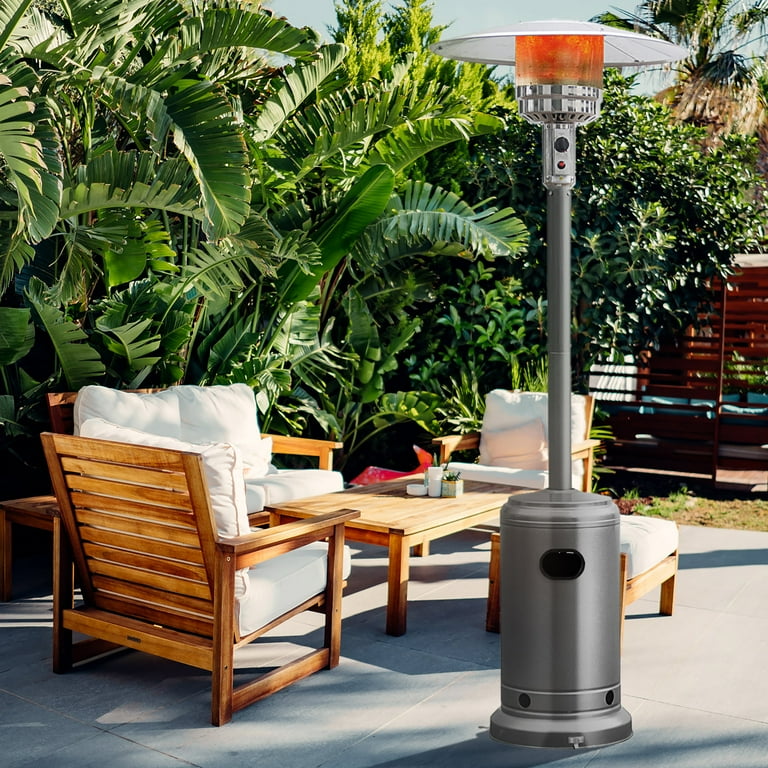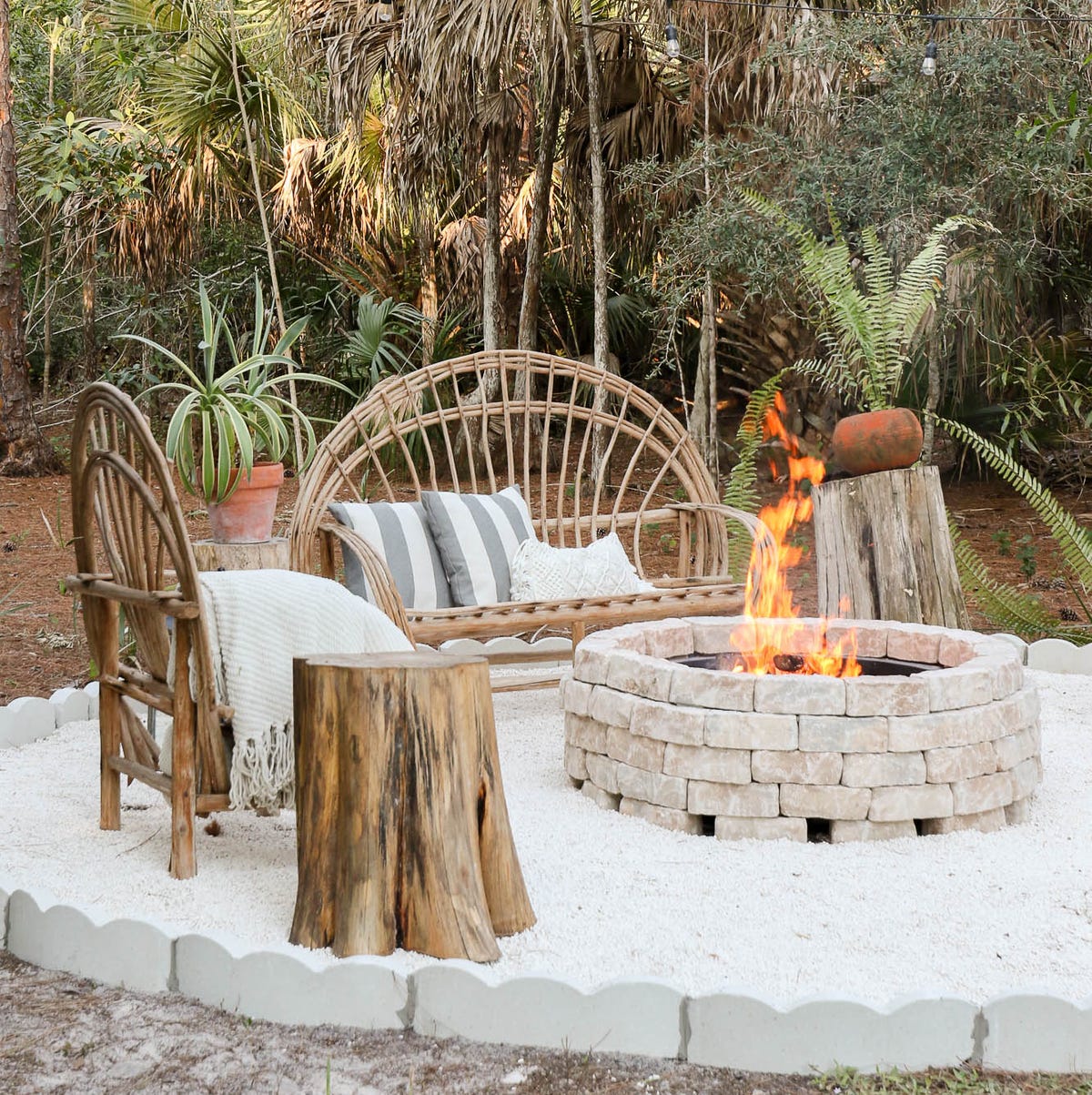Call us at 725-239-9966!
M-F: 8 AM-7 PM PST
Call us at 725-239-9966!
M-F: 8 AM-7 PM PST

Outdoor heating options like fire pits for backyards and patio heaters have become increasingly popular ways to extend the use of your outdoor space into the cooler months. But how do you decide between a fire pit or patio heater as the best outdoor heating solution for your needs?
This comprehensive guide examines the key differences and pros and cons of both fire pits and patio heaters. Read for everything you need to know to determine which is the best option for your outdoor area.
Fire pits create a more inviting atmosphere and heat broader areas but patio heaters are more portable and safer.
Patio heaters rely on propane while fire pits offer wood, coal, gas, or gel options for fuel.
Fire pits have lower upfront costs but higher operating expenses; patio heaters cost more initially but have lower ongoing costs.
Patio heaters easily direct adjustable heat to small spaces; fire pits better suit groups gathered around.

Fire pits and patio heaters serve a similar purpose in helping generate warmth for an outdoor living area. However, there are some notable differences when it comes to aspects like mobility and placement, fuel source options, heat output and coverage, ambiance created, safety considerations, and costs.
Patio heaters are flexible and easy to move. Most feature wheeled bases which allow you to smoothly roll them around your deck or patio to direct heat where needed. Fire pits, on the other hand, are intended as more permanent outdoor living space features. They are generally much heavier structures that can weigh hundreds of pounds. Fire pits need an underlying non-combustible surface like concrete, stone, or patio blocks that can support the extreme heat generated.
Patio heaters predominantly use propane as their fuel source, with newer models offering electric heating elements powered by batteries or an outdoor outlet. Fire pits can utilize natural gas, propane, gel fuel, wood, coal, or bioethanol as the heat source. This variety allows you to choose between dealing with refills or the process of stocking and cleaning up ashes after use.
The heat output, measured in BTUs, and coverage area differentiate these two outdoor heating options. Fire pits generate significant warmth with models reaching 35,000 to 150,000 BTUs to cover broader spaces for groups. In contrast, most patio heaters provide between 5000 to 50,000 BTUs. This concentrated heat works for single to few individuals in tighter proximity around the unit.
Fire pits output a wider span of BTUs ranging from:
For patio heaters, you’ll commonly find:
One of the distinct appeals of fire pits comes from the sensory experience the dancing flames provide. There is a nostalgic, primal comfort that comes from gathering around the fire in the evening. Patio heaters focus more singularly on delivering warmth as needed to make the space comfortable, without the same visual ambiance.
Open flames intrinsically demand awareness and precautions when adding a fire pit to your outdoor living space. Most areas legally require spark arrestors, screens, lids, or rings. Keeping children and pets at a safe distance is also important with the ember risk. However, patio heaters avoid this issue and are generally safer to use around kids and pets.
Fire pits have a lower initial purchasing cost, with basic models starting under $200 and high-end custom installations ranging over $5k. Operating expenses can add up quickly though depending on the preferred fuel source. Patio heaters start around $150 for small tabletop propane models but the heavier-duty permanent-style units run $500+. The ongoing propane tank refill costs may be more predictable.
See a clear comparison of the major specifications between fire pits and patio heaters in the table below:
| Spec | Fire Pit | Patio Heater |
|---|---|---|
| Mobility | Not portable, permanent install | Portable, lockable wheels |
| Placement | Non-combustible surface needed | Any patio/deck |
| Fuel source | Wood, coal, gas, gel | Propane, electric |
| Heat output | 35,000 - 150,000 BTUs | 5,000 - 50,000 BTUs |
| Coverage area | Groups (larger spaces) | Individuals (small spaces) |

Weighing the positive and negative factors associated with both patio heaters and fire pits helps crystallize which is ultimately better suited for your specific backyard.

Deciding whether a patio heater or fire pit makes the most sense ultimately comes down to an honest priorities assessment. Key questions to ask:
If you want an enduring backyard living space focal point that draws people together, a customized fire pit is tough to beat. When the goal is boosting flexibility to use changing outdoor venues as temperatures permit, patio heaters better match practicality and budget for most.
As you weigh these considerations, reviewing an in-depth fire pit buying guide can provide helpful direction in identifying the ideal heat source aligned with your backyard vision. Factors like design, size, materials, and available accessories all impact satisfaction.

Ultimately, fire pits and patio heaters both have their merits depending on your specific needs and priorities. However, when weighing the inviting atmosphere and broad heating coverage of fire pits against the flexibility and safety of patio heaters, fire pits emerge as the best overall outdoor fire option. Thoughtful placement and proper precautions mitigate any downsides for most homeowners seeking to extend outdoor living space use.
Several factors should be considered: the type of fuel you prefer (propane firepit or electric patio heater), the initial cost, and the heat settings. An outdoor propane firepit may provide a warmer and more authentic fire experience but requires managing propane gas and ignition, while electric patio heaters are typically easy to use and can be set at different heat settings.
Patio heaters tend to come with safety features that may not be available with most firepits. For example, many types of patio heaters have an automatic shut-off feature if the heater is tipped over. However, it's essential to always follow the proper safety guidelines when using any type of outdoor heater.
The key difference is how these heaters use their energy to generate heat. A hanging patio heater, as the name suggests, hangs from the ceiling and provides heat from above, while a standing electric patio heater distributes heat from its structure, usually in a circular manner. Your choice depends on your patio space and layout.
Both patio heaters and fire pits are excellent choices for extending your outdoor time. If you enjoy gathering around a fire pit, roasting marshmallows, and having a fire table surface for drinks or food, a fire pit may be the right choice. If you prefer a smoke-less environment, more heat control, and want to avoid the care that a fire pit requires, a patio heater might be best for you. Let’s take a look at what suits your yard the best.
Patio heaters come in various styles, with propane, electric, and natural gas being the common types. There are also different designs to fit various settings, such as standing, tabletop, and hanging patio heaters. Each type has its own set of benefits and features to enhance your outdoor gatherings.
Patio heaters work by producing radiant heat. Propane heaters use a propane gas tank to fuel the heating element which emits heat, while electric patio heaters use either infrared or halogen bulbs to generate heat. The heat is then spread out through the top of the heater, warming up the surrounding area.

{"one"=>"Select 2 or 3 items to compare", "other"=>"{{ count }} of 3 items selected"}
Leave a comment